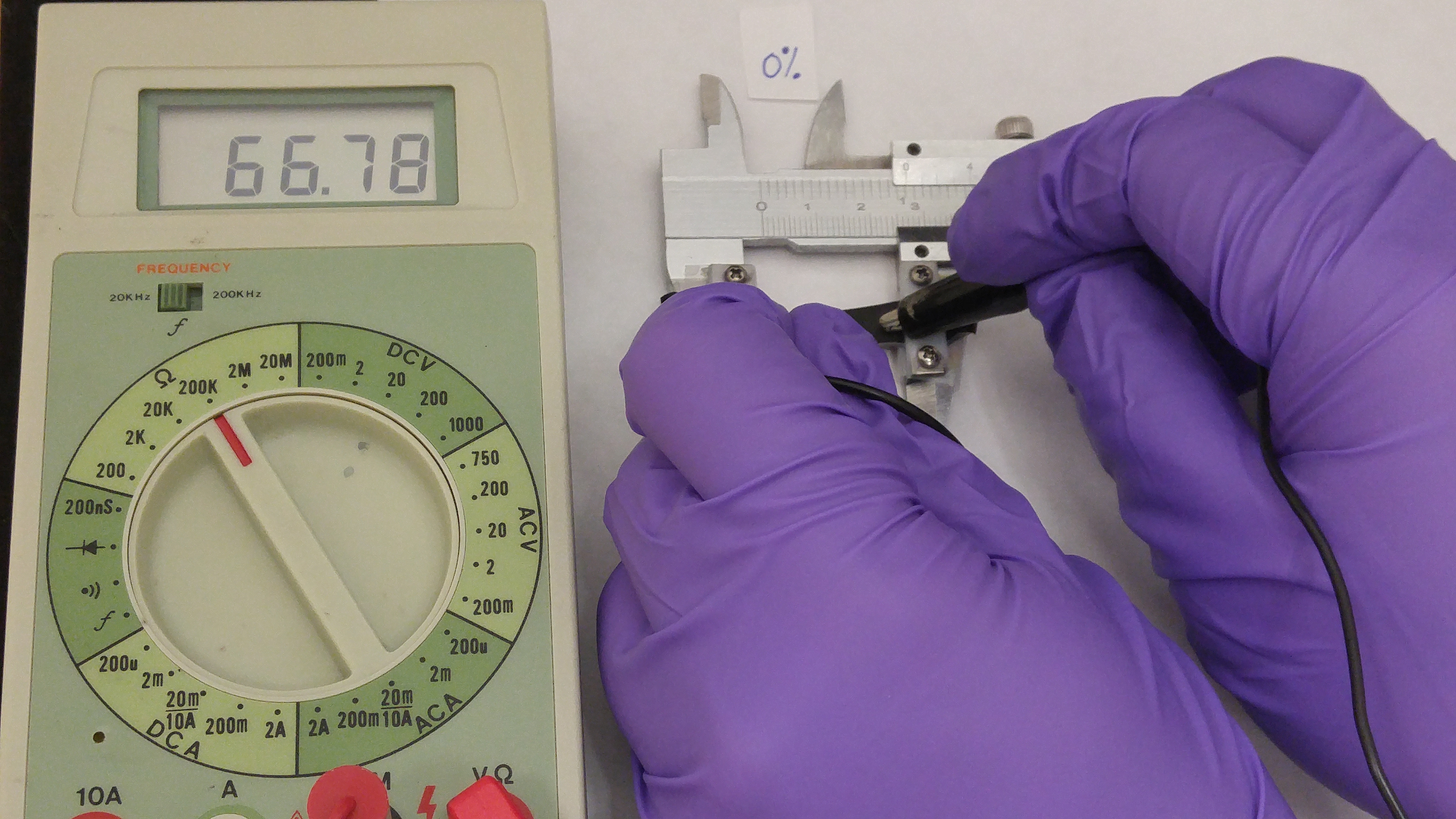


This summer, Dr. Luyi Sun (top left) at University of Connecticut brought three community college students into his lab to collaborate with the UConn graduate and undergraduate students. Olivia Hussey and Elaina Becher of Quinebaug Valley Community College, Gheryn Philippe-Cole of Manchester Community College, and Tom D’Auria of the Chemical Engineering at UConn. Among these students, three separate materials science projects were pursued, all sponsored through a NASA CTSGC Faculty-Student Summer Research Grant.
Hussey and D’Auria researched Stimuli Induced Color Change in Nanocomposites. This work focused on the manipulation of an inorganic/polymer composite coated atop a reflective substrate. The changes in the thickness of the coating can affect the light interference in a manner similar to X-ray diffraction, but scaled to the visible spectrum. The result is a bright, solid iridescent color. The coating swells in the presence of moisture, allowing the thickness, and thus the color, to be tuned in situ. This spectrum tunable quality makes the material suitable for use in optical instruments in the realm of astrophysics. A detailed paper on this topic will be published by the end of the year. Through this research, Hussey and D’Auria received valuable training and experience with a multitude of instruments including but not limited to: Spin Coating, Surface Morphology Analyses, X-Ray Diffraction and UV-Spectroscopy. Following this experience, Hussey plans to enroll at a four-year institution to continue her career in science and engineering. D’Auria is preparing to apply to prospective graduate programs.
Becher contributed to research on Flame Retardant Nanocoatings with Excellent Thermal Insulation. In this project, nanocoatings were applied to various substrates to determine if the coating was flame retardant and durable. These properties were achieved once again through an inorganic/polymer composite in which the clay based inorganic nanosheets bring flame retardant properties and the hydrophobic polymer binds the inorganic nanosheets together. Vertical flame tests were able to demonstrate strong flame retardancy while maintaining the hydrophobicity necessary for washing. This coating can be applied to commercial textiles as well as any material at risk of ignition, such as EVA suits with regards to NASA. Becher was trained to use a Thermogravimetric Analyzer and contributed significantly to the writing for the publication. With these skills she plans to continue her career in a STEM field.
Philippe-Cole worked on Stimuli-Responsive Sensors. The purpose of this project was to use a rigid thin film and soft substrate to create a system that changes color when subjected to strain. Once being stretched, the rigid thin film on top cracks and exposes the soft substrate below, upon release the original color returns. The process is fully reversible. In addition to changing color, a layer of carbon black beneath the substrate changes electrical resistance with strain. The final product possesses three capabilities: color alteration in normal light when stretched, color change in UV light, and resistance tuning. These functions together have potential uses as sensors in several different fields. Philippe-Cole was trained in sonication technique and sputter coating during this research. He also plans to continue work in engineering at a four-year institution in the future.
The research done through this grant was a success on all fronts. The students made significant contributions to Dr. Luyi Sun’s work, and the four students received opportunities to solve technical problems not seen in the classroom, and an exposure to the world of academia not normally seen at their levels.
To find out more about applying for a Faculty-Student Summer Research, please visit.
